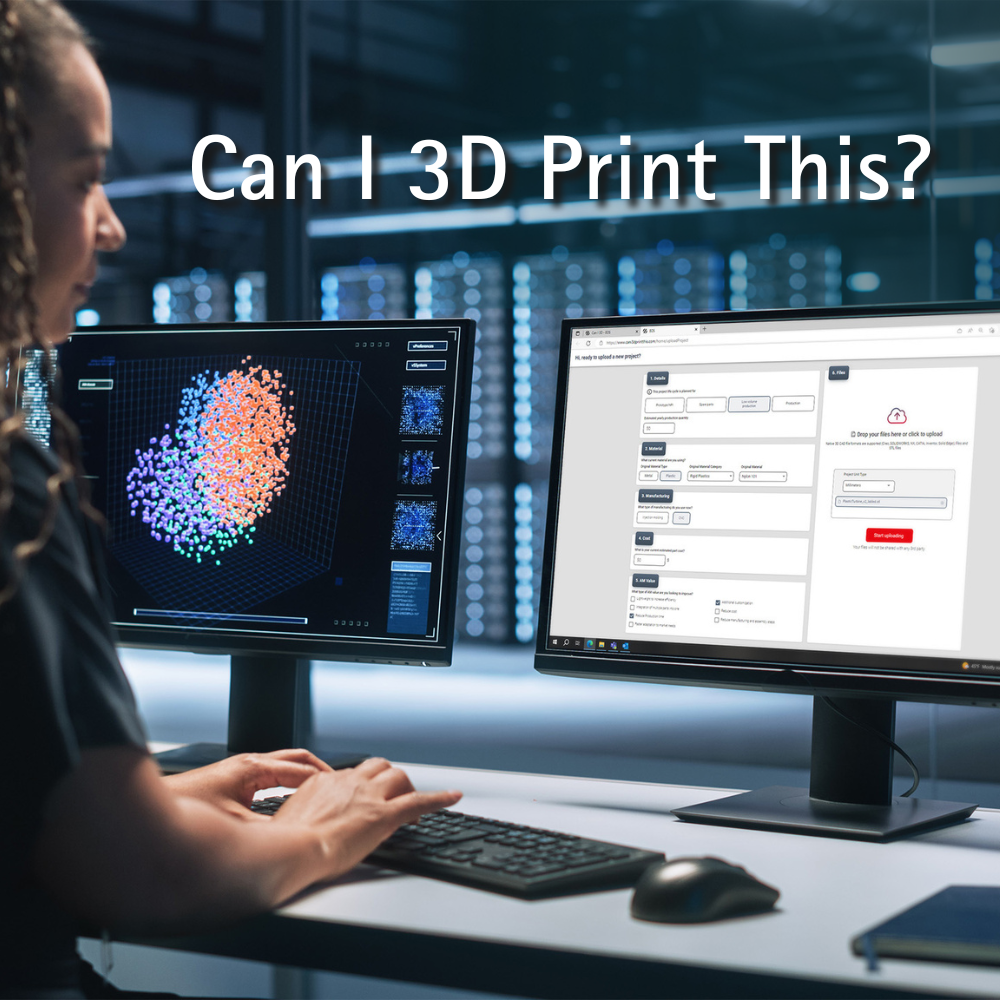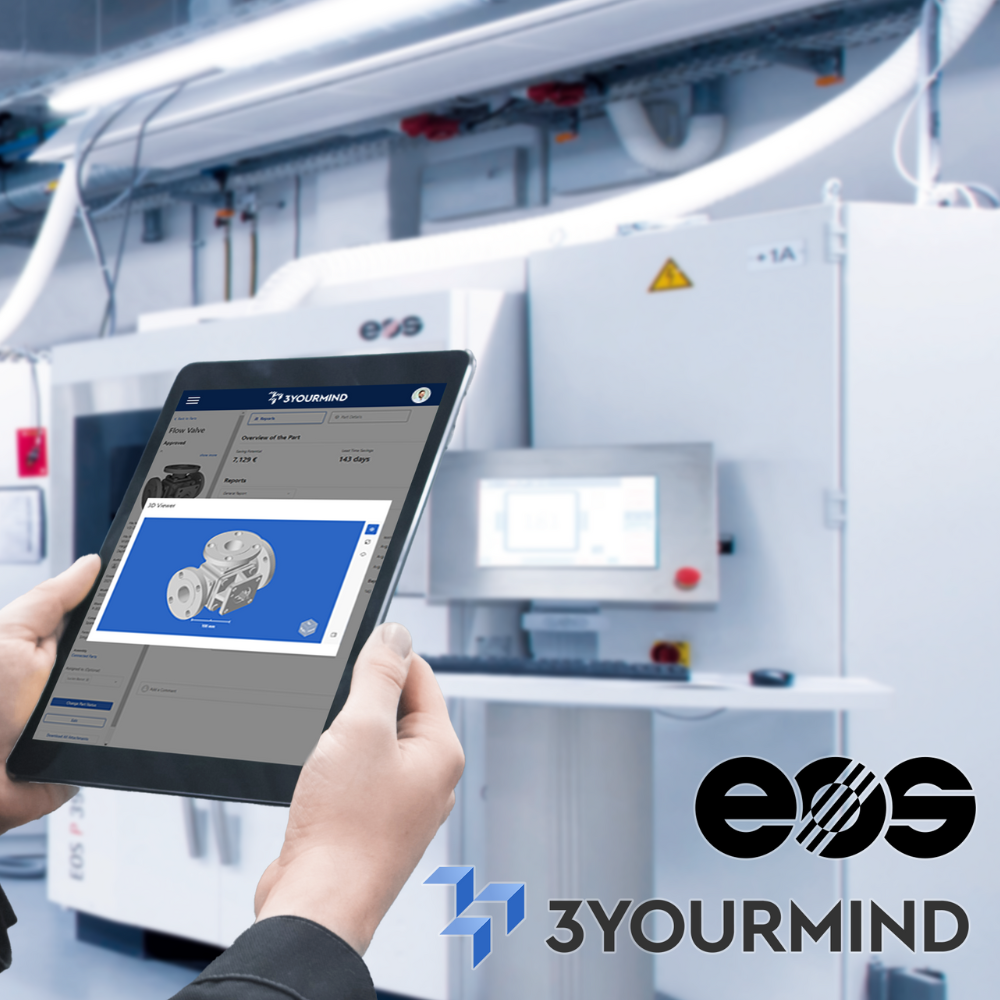As members of the Additive Minds Consulting team, taking applications that have been designed the same way for decades and breaking the traditional mold is not unusual. Thinking outside design legacy is a job requirement in the Additive Manufacturing (AM) industry, and allows our AM engineers to continually push the boundaries of their design knowledge and experience.
The inspiration
.png)
The celebration of EOS North American 1,000th machine installation was an opportunity to bring creativity to a traditionally results-based craft and to base the award design on artistry rather than application capabilities. The initial plan was an award that was relatively easy to make but still visually appealing. The Additive Minds metals team could spend hours dreaming up a complex, intricate award but time and machine efficiency were still important to keep in mind. After considering the multiple design elements, tension structures were decided as a good starting point.
Material selection
A common misconception of metal 3D printing is material limitation. In reality – EOS has a robust catalog of different metal materials for varying application requirements. With the freedom to examine material selection from a purely visual standpoint, the Additive Minds team leaned towards the dark shine of Ti64 titanium 316LVPro and the dynamic florescence of Copper Cu – a conceptual shift from material selection based on heat ability index and strength. The pattern of the floating sphere came from the award recipient, Sintavia, a design the company has employed in their own application production.
The base of the award, made of 316LVPro, was able to be printed in about a day using the EOS M 290. 316LVpro prints 4x faster than most of our high-speed processes, allowing the initial design concept of a thicker base to secure support structures to be made within a reasonable time frame.
Design
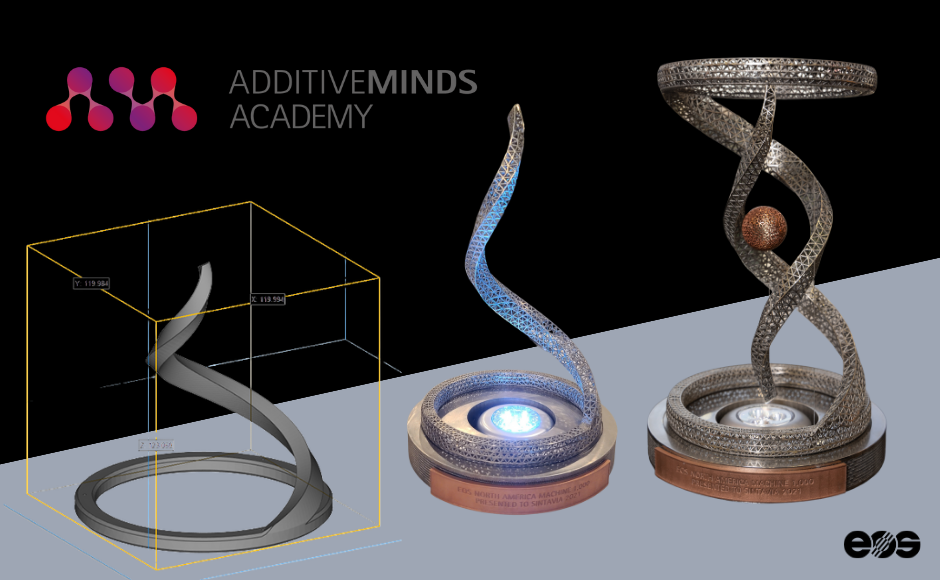
The Additive Minds team has worked extensively with the production of thin copper wall structures, which lent well to designing and printing the floating sphere. The lattice technique is used in light weighting customer designs, creating an accurate shape, and maintaining the integrity of the application while eliminating excess material.
The final product: key takeaways
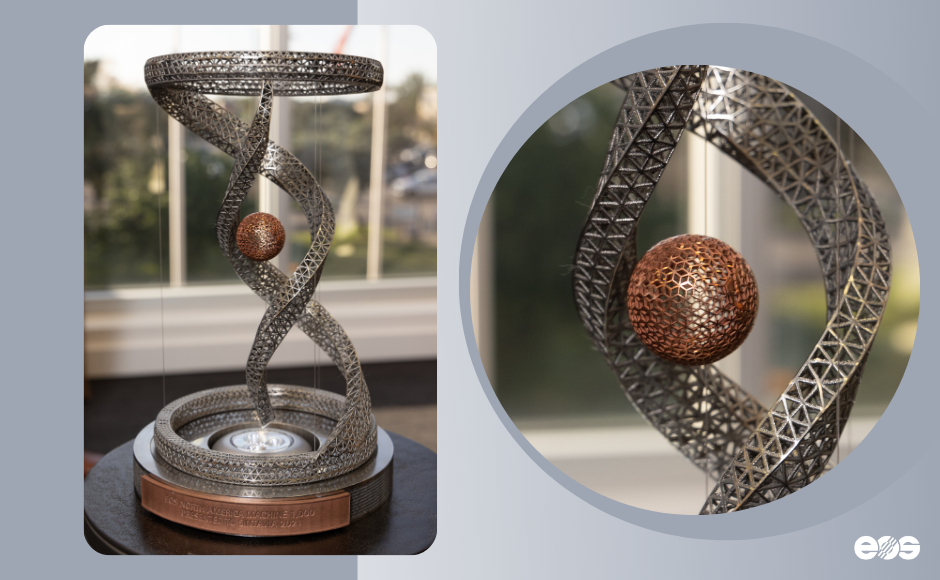
Restructuring your thought process for visual and symbolic design requirements is not a common practice within the Additive Minds team and opened many eyes to the artistry that can be brought to 3D printing. As AM engineers, we are often driven by the ROI of applications, blind to the beauty and incredible ability we have to print complex, intricate structures with a singular AM system and design. The use of multiple materials for the award was a great test for future application design – and good practice for the 2,000th machine sale award in the future.
If you are interested in exploring the design possibilities of metal 3D printing, using multiple materials within applications, or bringing more beauty to your AM parts, contact our Additive Minds team to design your next application.
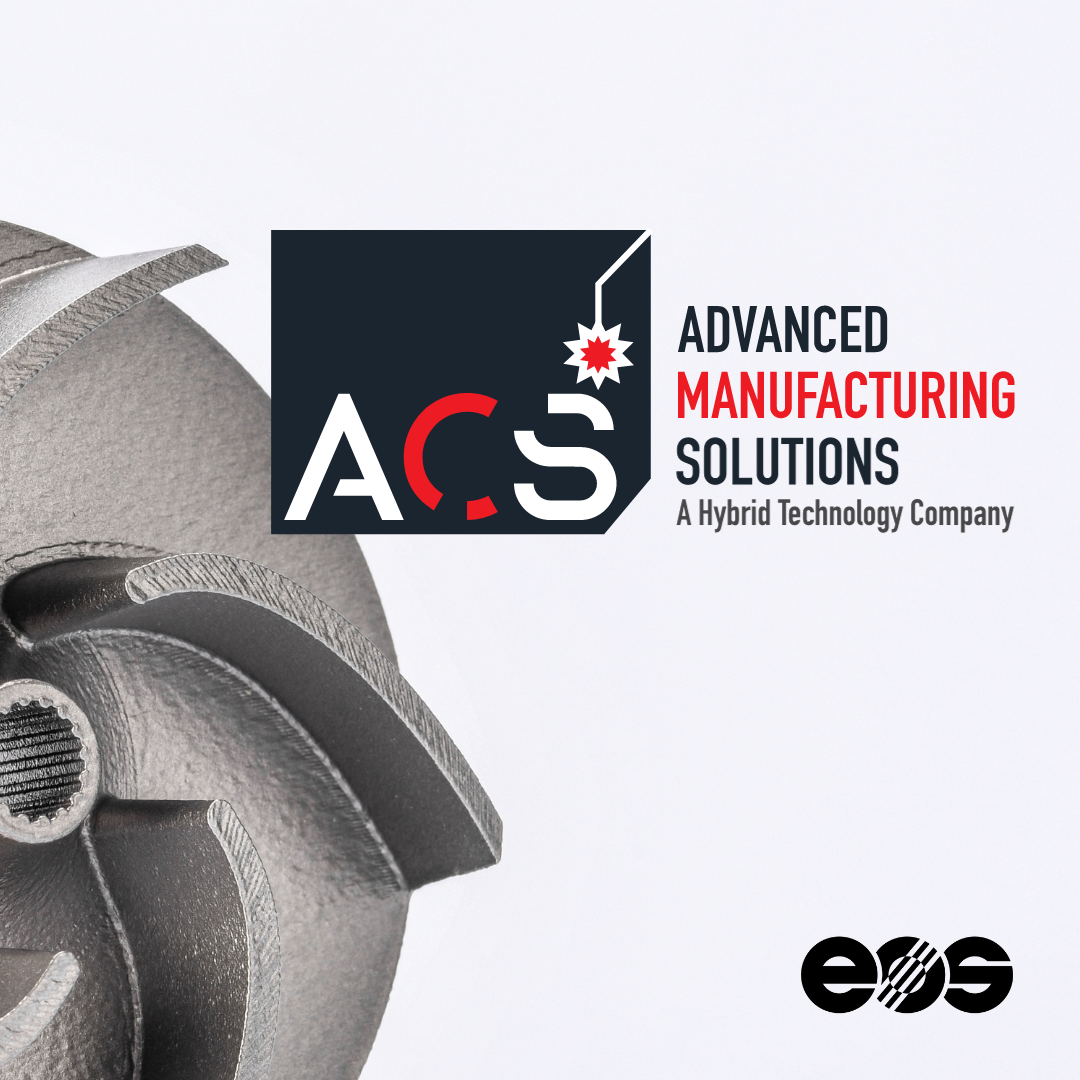

.png)


